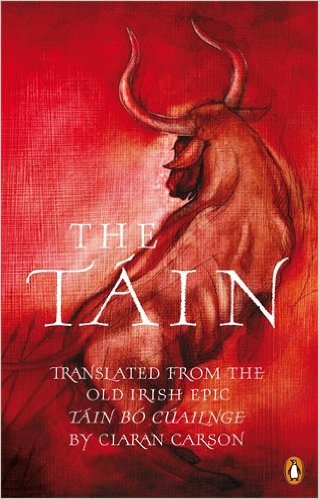 The process by which epic poems take their form is complex and relies as much on the efforts of poets, historians, and scholars as on any organic unity of the stories themselves. A good example of this process is described in The Arthur of the English, which details how the Arthur Cycle came into being as a unified story. Often, as in the case of The Iliad or Das Nibelungenlied, we can point to a particular person who cast the tale into the form we know today. (Yes, sometimes a person who may not have existed as we think of him, but probably a particular person, nevertheless.)
The process by which epic poems take their form is complex and relies as much on the efforts of poets, historians, and scholars as on any organic unity of the stories themselves. A good example of this process is described in The Arthur of the English, which details how the Arthur Cycle came into being as a unified story. Often, as in the case of The Iliad or Das Nibelungenlied, we can point to a particular person who cast the tale into the form we know today. (Yes, sometimes a person who may not have existed as we think of him, but probably a particular person, nevertheless.)
The case of Táin Bó Cúailngne (The Cattle Raid of Cooley) is typical. In his new translation, The Táin, Ciaran Carson notes specifically that he used the Old Irish texts edited and published by Cecile O’Rahilly (Táin Bó Cúailnge from the Book of Leinster [1967] and Táin Bó Cúailnge Rescension I [1976]), augmented by the 1969 translation by Thomas Kinsella, with the same title (in order, Carlson surmises, to make it sound less like a B-Western and to bring it into line with other epics). This was simply because there is no “final” version of the story, only assemblages of earlier or later provenance. His goal was to produce a clear, readable text that maintained as much of the character of the Old Irish tale as possible.
For those not familiar with the story, it is, indeed, the story of a cattle raid of mythic proportions. Medb, queen of Connacht, is upset because, although their wealth is equal in every respect, there is in her extensive herds of cattle no match for her husband Aillil’s great bull, Finnbennach the White-Horned. There is, however, a bull equally magnificent in a herd in Ulster, and they determine to capture it and bring it home. They plan their invasion for a time when the Ulstermen are under a curse that leaves them weak and unable to fight. However, their planning doesn’t account for the presence of the hero Cu Chulainn, over whom the Curse has no effect.
The story is largely composed of episodes relating Cu Chulainn’s encounters with various heroes and groups of heroes of the “army of Ireland” in its march through Ulster. There is a certain amount of repetition here: Cu Chulainn kills them all, more or less quickly, one at a time or in groups, which is often rendered as “he killed them and cut off their heads,” although the more notable heroes get extended treatment.
It is also germane to talk about translations versus adaptations, although the two can overlap quite markedly at times. Carson has given us a translation based on the standard texts, although he has, in fact, made some decisions that move toward the realm of adaptation, if only slightly, such as which text to follow, the order of events, and emendations and additions that fit his concept of the accuracy of his rendering. I say “only slightly” because Carson’s version, after all, is not nearly so freely rendered as Gregory Frost’s 1986 novelization, Tain, and while fluent and eminently readable, it does not, I think, engender the same excitement in the modern reader.
In all honesty, it drags in places, most notably in “the lists,” those litanies of participants in various gatherings and battles that were a necessary and much-favored component of the original tales (probably because at least some members of the audience — probably the ones who were, so to speak, paying the piper — were very interested in the exploits of their earlier kin, whether real or only claimed).
What is fascinating about this is the picture of what was important to the warrior class of ancient Ireland. What immediately struck this modern reader was Medb’s position: a woman, a queen in her own right, holding wealth also in her own right, and bragging of her prowess in battle (although she reveals herself to be an arrant coward when the chips are down). And, in common with other early epics, flyting, the practice of insulting one’s enemy as a prelude to battle, plays a prominent part. And lest anyone forget that these heroes were larger than life, their descriptions are replete with shields that can shelter a herd of cattle or a band of soldiers, spears and swords almost never less than eight in number, millstones worn as additional armor, and the like. And the utter contempt shown to commoners makes me glad I wasn’t a bondsman or peasant of the time. In these clear if somewhat oblique descriptions of the structure of the society, The Táin is of more than passing interest.
This is one that I think is of more interest to the serious student or scholar than the general reader. Carson provides a very instructive introduction discussing the history of the epic and its sources, a cogent and well-argued note on the translation, and a very welcome pronunciation guide, including examples drawn from the characters and places of the story. The text is footnoted with very helpful comments on the meanings of phrases and notes on geography and the like. For anyone with a strong interest in Irish history and literature, or folklore and myth in general, this is certainly a welcome addition to the library.
(Viking, 2008)
